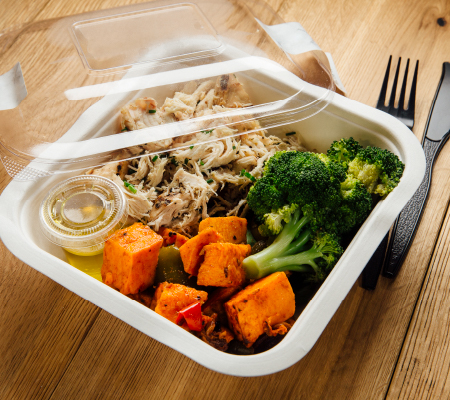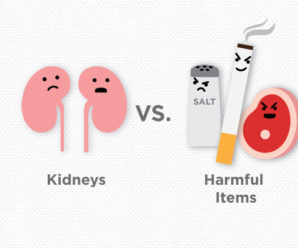
Editor’s note: This article was published on April 15, 2020. COVID-19 information and recommendations are subject to change. For the most up-to-date information, visit the Centers for Disease Control and Prevention (CDC) website or view our most recent COVID-19 blog posts.
In these days of COVID and sheltering at home you yearn for a break from cooking but what’s for dinner?
Though restaurants are closed due to the novel Coronavirus (COVID-19), many communities’ restaurants still give you options in the form of drive-through or take-out fare.
Marshfield Clinic Health System Dietitian Chrisanne Urban offers helpful tips if you want to change up the food on your dinner plate.
“Prior to going to get take-out, decide what your goals are and stick to them,” Urban said. “It could be ’I want to eat healthy.’ ‘I want my family to eat healthy.’ ‘I want to take care of my body and not gain weight while I’m working from home.’ Don’t lose sight of those thoughts.”
Homework first
Before getting in the car, do your homework. Chain restaurants usually have menus online that include nutritional information but smaller hometown restaurants may not have menus electronically “so generally know what you want to order before you get there,” she said.
Create a list
Planning helps.
“A list is something you make when you’re thinking ahead,” Urban said, “so you don’t buy impulsively. That’s why they work great for buying groceries.”
An example of derailing your good intentions, she explained, is going through a drive-through with no list or preplanning, seeing those enticing food photos on the menu board and then intentions go flying out the window.
Portions, calories, fat, sodium
If you don’t eat it you don’t have to burn it off, so consider sharing an order to cut calories.
Read labels to learn about fat and especially sodium. “It’s hard to find low-sodium options,” she said. “If you have any type of heart disease it’s very difficult to eat low sodium in every restaurant. You can find things but it will be even more restrictive of what you can select off the menu.”
Urban gave thought for you to different types of foods and ways to choose healthier options:
Pizza
Crust: Choose thin, avoid cheese filled.
Sauce: Choose tomato vs. cream.
Toppings: Go with veggies, and avoid or go light on processed meats.
Cheese: Ask for light versions.
Extras: Rethink cheesy bread or dessert items.
Hamburgers
Size: Avoid supersized and stick with smaller versions, or order a child-size meal or split a meal.
Condiments: Get them on the side and choose lower-fat options like mustard or ketchup which have 15 calories per tablespoon vs. 100 calories per tablespoon for mayo.
Veggie burger: A good option but watch the extras.
Extras: Consider skipping added bacon, cheese or other sauces.
Other options: Go with grilled chicken or salads but get condiments on the side and choose low-fat low-cal ingredients.
Mexican
Chips: Avoid them if you’re watching for high sodium and high fat.
Salsa: This high-sodium food could be switched with pico de gallo – diced tomatoes, onions, fresh cilantro and jalapeno.
Soft wraps: Choose them over deep-fried versions.
Extras: Ask for less cheese and swap out sour cream for guacamole.
Chinese
Choose lots of veggies, brown rice and steamed entrees, and avoid fried food unless you can split an order and consider asking for low-salt dishes.
Italian
Meat: Select grilled over fried.
Pasta: Avoid cheese-stuffed pastas and consider zoodles as a pasta substitute.
Sauces: Go tomato vs. alfredo.
Salads: Ask for dressings on the side.
And, watch the breadsticks.
Other options
Chicken: Remove skin prior to eating and steer clear of high-calorie, high-fat biscuits.
Breakfast: Choose English muffins over croissants and biscuits.
Sub sandwiches: Choose smaller sizes unless you split it or save half, choose healthier breads, pile on veggies, watch cheeses and sauces, and keep in mind that tuna and seafood are mixed with higher-fat mayo.
Then, after planning and getting food home, enjoy. Then get your tennis shoes on, go for a walk and consider one more thing, according to Urban. “Buy gift cards now and tuck them away for later, to help support your communities’ restaurants today.”
Related Posts
COVID-19 and staying at home: 5 tips to help manage conflict







Leave a Reply